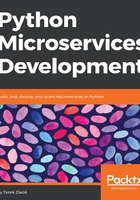
Illogical splitting
The first issue of a microservice architecture is how it gets designed. There's no way a team can come up with the perfect microservice architecture in the first shot. Some microservices like the PDF generator are an obvious use case. But as soon as you deal with the business logic, there are good chances that your code will move around before you get a good grasp of how to split things into the right set of microservices.
The design needs to mature with some try-and-fail cycles. And adding and removing microservices can be more painful than refactoring a monolithic application.
You can mitigate this problem by avoiding splitting your app in microservices if the split is not evident.
If there's any doubt that the split makes sense, keeping the code in the same app is the safe bet. It's always easier to split apart some of the code into a new microservice later than to merge back to two microservices in the same code base because the decision turned out to be wrong.
For instance, if you always have to deploy two microservices together, or if one change in a microservice impacts the data model of another one, the odds are that you did not split the application correctly, and that those two services should be reunited.